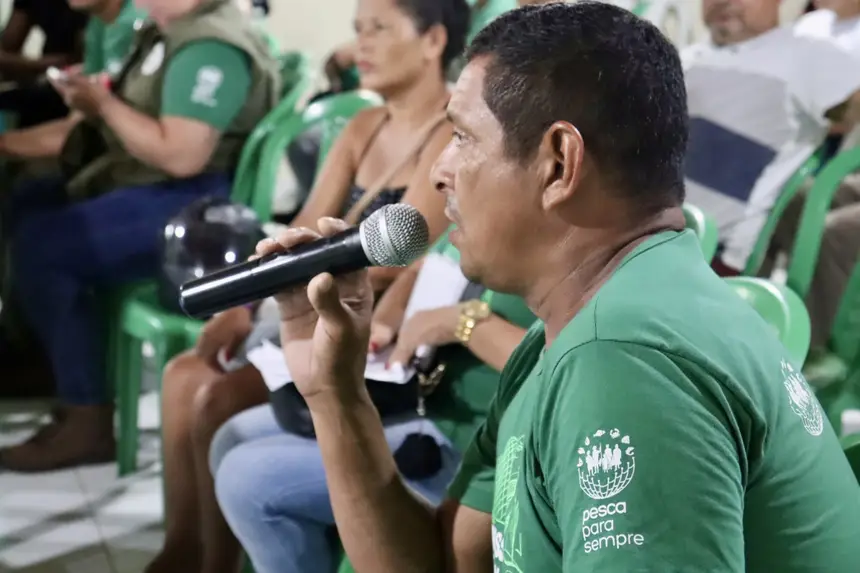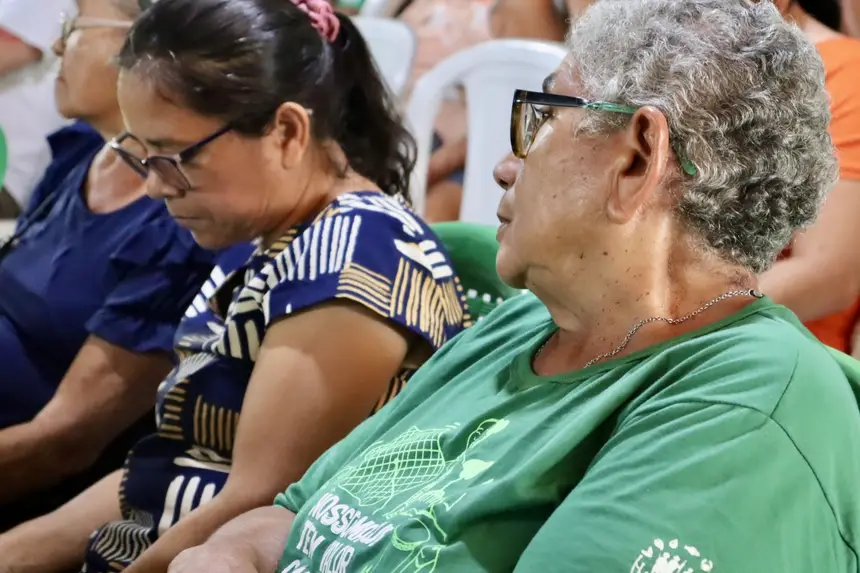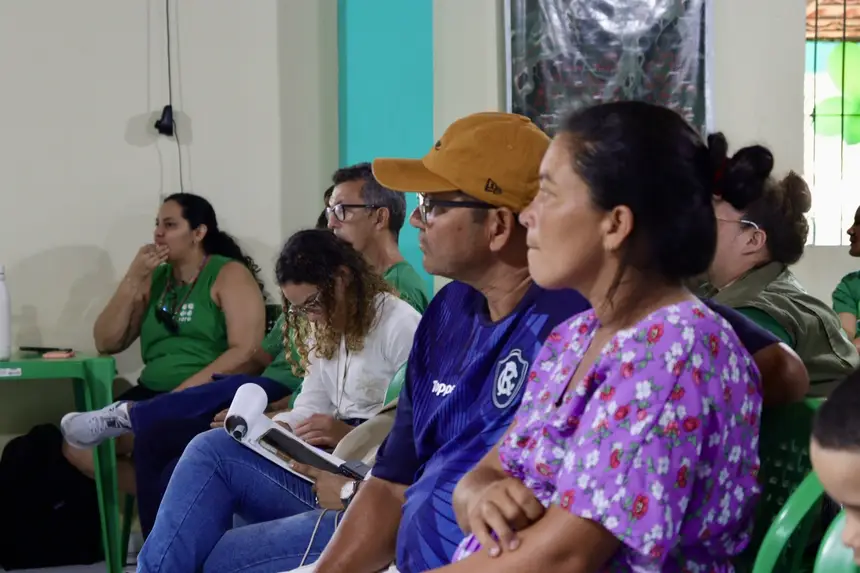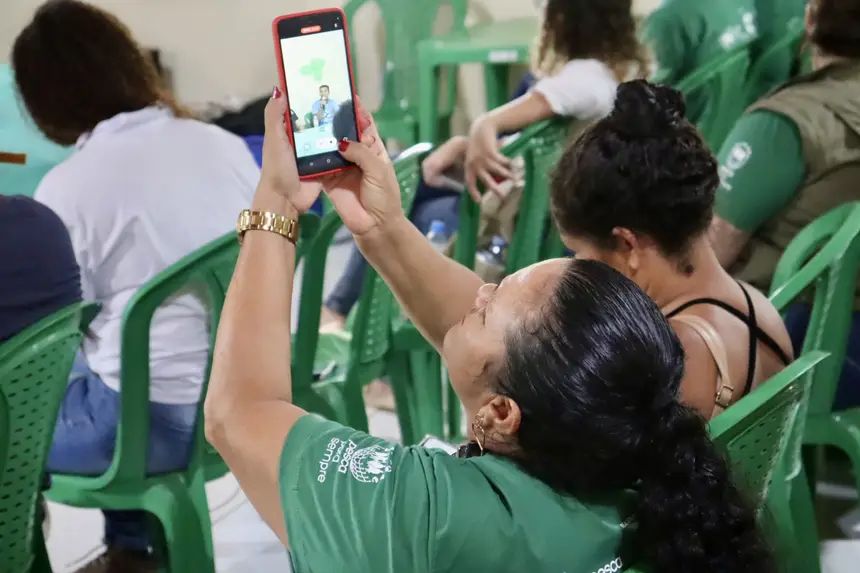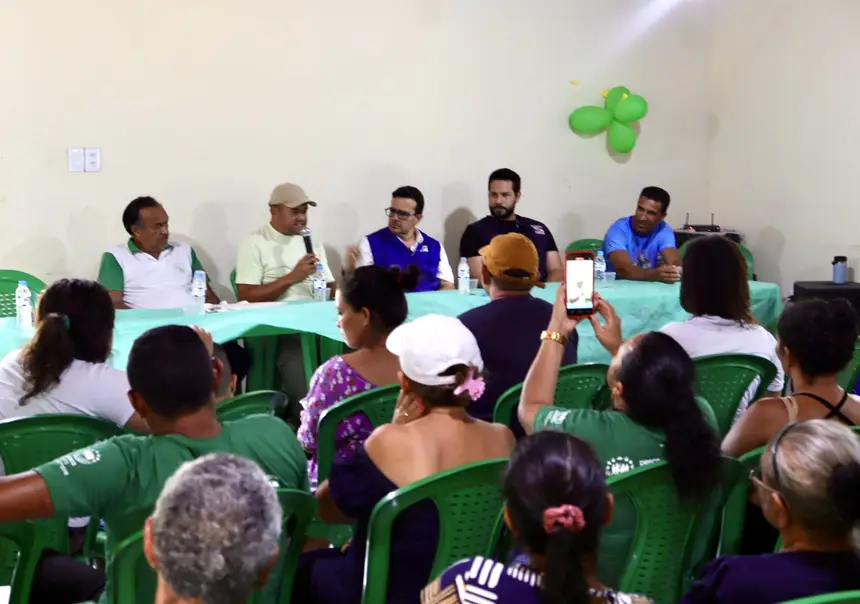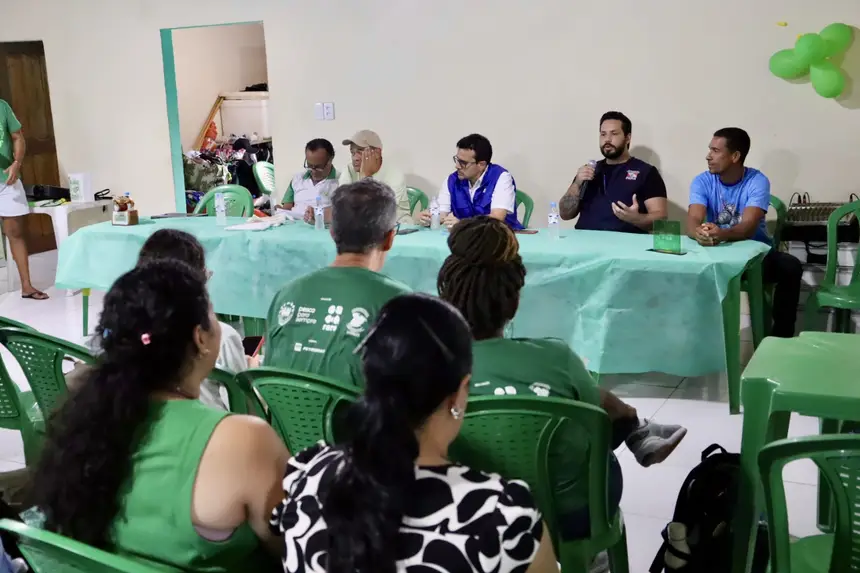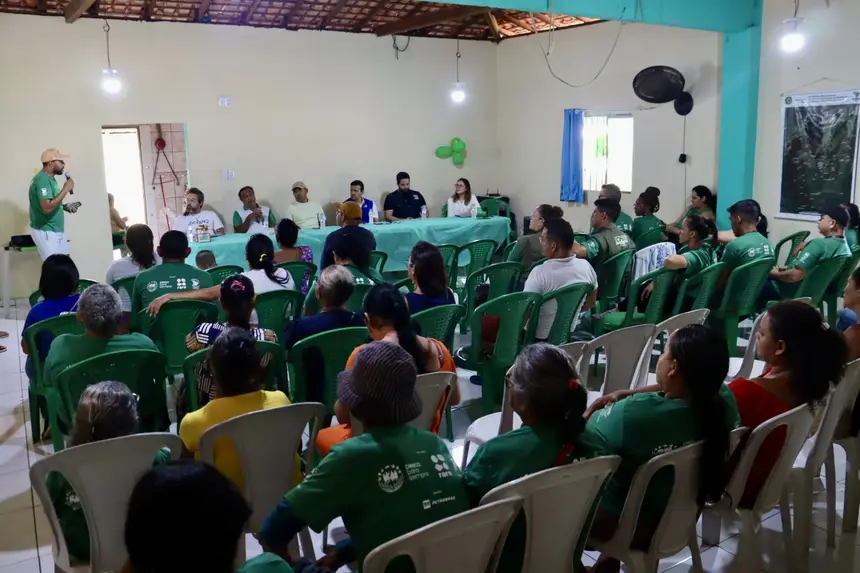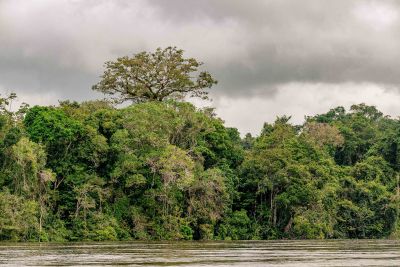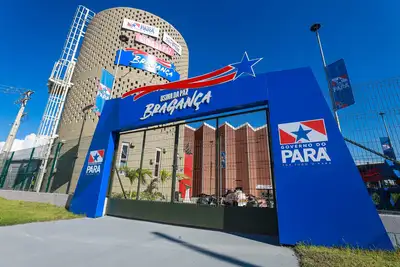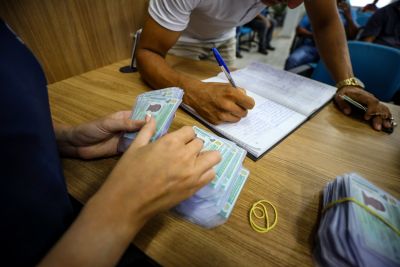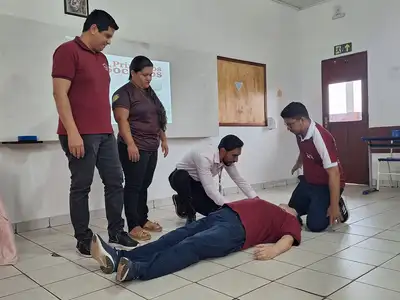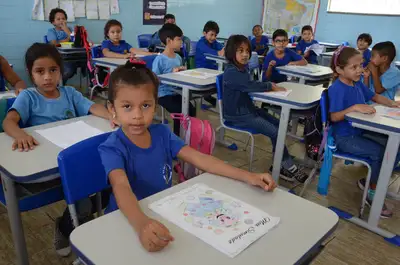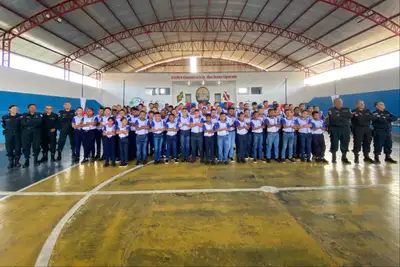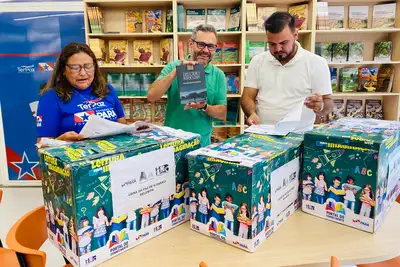Semas discusses conservation projects in the Mãe Grande de Curuçá Extractive Reserve during the mangrove protection month
Strengthening of oyster farming, carried out by the Regulariza Pará Program, is debated during the July Green Campaign, coordinated by Auremag
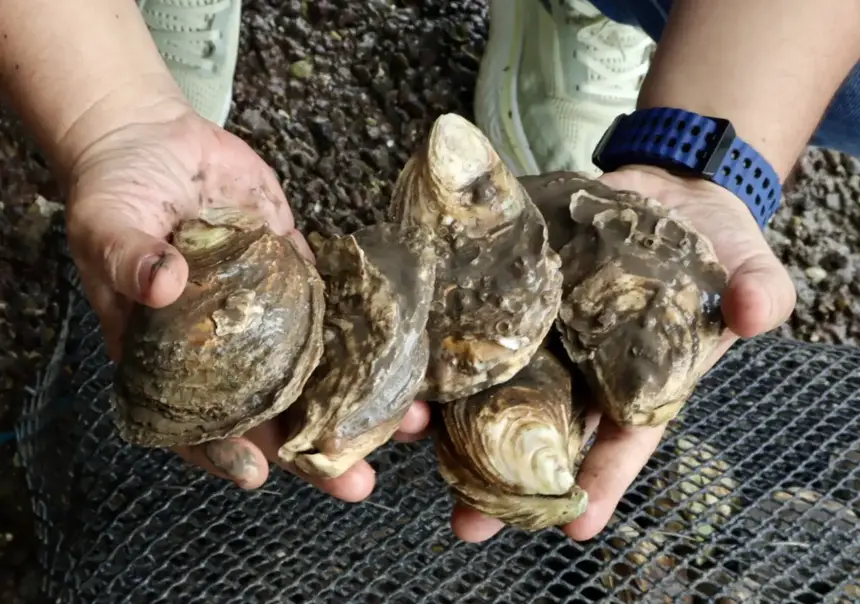
In the first half of 2025, the State Secretariat for the Environment, Climate and Sustainability of the State of Pará (Semas) began implementing the infrastructure strengthening project for oyster farming and environmental regularization of oyster cultivation and the necessary projects for the installation and operation of a future processing industry in the municipality of Curuçá.
The project, co-constructed with the Association of Aquaculturists of Vila Lauro Sodré (Aquavila), is implemented in partnership with New Fortress Energy and was shared with the network of partners: Association of Users of the Mãe Grande de Curuçá Extractive Reserve (Auremag), Integrated Management Center ICMBio Salgado Paraense, Municipal Government of Curuçá, and Rare Brazil.
During the July Green Campaign event, held last week and organized by Auremag in homage to the month of mangrove protection, the Deputy Secretary of Environmental Management and Regularity of Semas, Rodolpho Zahluth Bastos, updated extractive leaders, fishermen, fisherwomen, shellfish gatherers, partner organizations, and the municipal government on the actions already developed and the project implementation schedule, highlighting the current stage of the delegation of environmental licensing and the acquisition of necessary equipment and materials for oyster management.
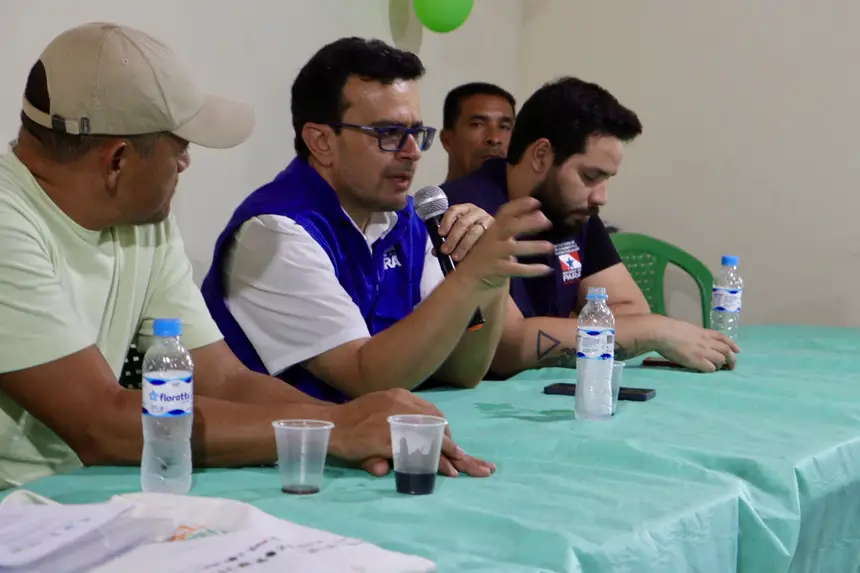
“We formalized the request for the delegation of environmental licensing to Ibama Brasília, and we have already held two technical meetings with the institute regarding the granting of this licensing to the state sphere, aiming to ensure the priority of environmental regularization of traditional and community oyster management. The impact we expect from environmental regularization involves socio-productive inclusion, conservation of mangroves, value addition in marketing, and support for the oyster farming chain. The project is about strengthening, territorial planning in protected areas, and above all, the productive autonomy of coastal communities inserted in the maretório, as it is an initiative that aims to reinforce, recognize, and value traditional practices and knowledge, in addition to social technology for managing natural resources, aligning with public policies for coastal, environmental, and territorial management,” emphasizes the deputy secretary.
During the second half of 2025, the project will also equip the extractive community of the Mãe Grande de Curuçá Reserve. “The community has also defined the infrastructural support it wishes to receive, and we are in the phase of transporting these acquisitions – a vessel with a 90 HP engine, 1000 oyster cultivation pillows, ropes, and a pillow washer – necessary for strengthening the productive base, with increased productivity and quality of oyster cultivation. This favors the marine socio-biodiversity chain, generates income, and encourages communities to remain in their territories for the conservation of mangroves,” explains Rodolpho Bastos.
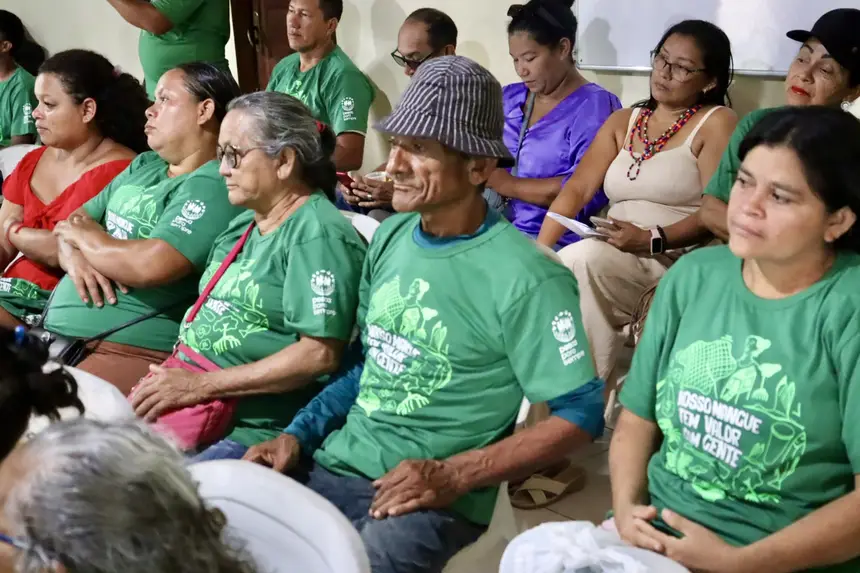
Oyster pillows are structures made of nets or screens, usually rectangular in shape, used to cultivate oysters in floating or fixed systems. These pillows are designed to keep the oysters suspended in the water, allowing for good water flow and access to food, as well as protecting the animals from predators and sediments.
Social participation – in the last quarter of 2024, the community itself defined the priorities for infrastructural support to Semas staff and partners, who were involved in the active listening and co-responsibility process, to strengthen territorial governance and community protagonism in public policies, guidelines of Regulariza Pará.
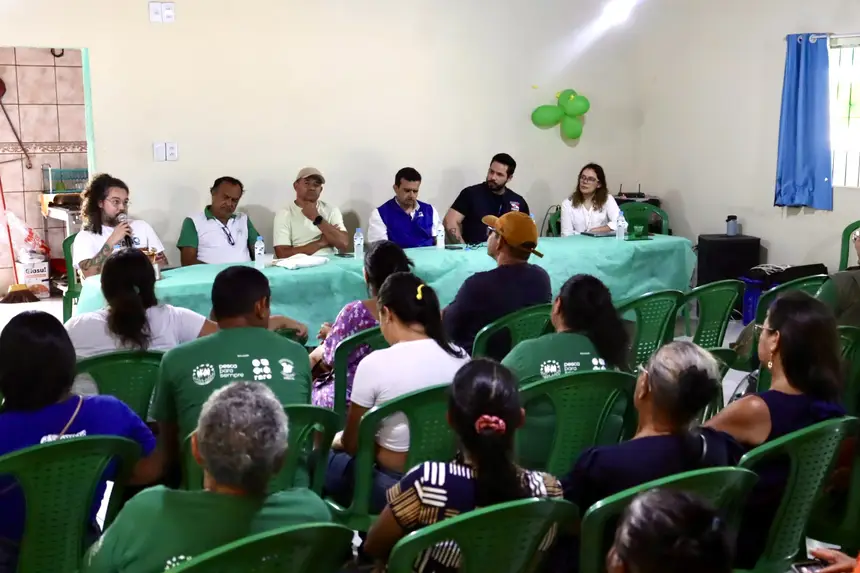
Galvão da Silva, from the Association of Aquaculturists of Vila Lauro Sodré (Aquavila), in Curuçá, highlighted that “it is a project that came to add equipment for oyster cultivation in our community. Since the year 2000 we have been in this struggle, I am one of the founders of Aquavila, and we have this dream of licensing so that our artisanal oyster farming can be the pioneer having the environmental regularization of our oyster bank, where we preserve, work, and make our living from. It is gratifying to see that the State is looking at our work and is sensitive to help us in our oyster cultivation in the Mãe Grande Reserve.”
Aquavila is recognized for the sustainable production of oysters of the species Crassostrea brasiliana, and seeks partnerships to transform the reality of local production. “Today, if there are oysters in the municipalities of the region, it is because they come from this natural oyster bank that Aquavila has preserved since the year 2000 and sends oyster seeds to other states as well. The project equipment is also arriving, and we are aware of everything because we are the ones who lead as caretakers of these oysters in the water,” explains José Galvão about the progress of the materials selected to support community production infrastructure, such as the pillows and the vessel.
“Semas has an important project here in the municipality supporting traditional oyster cultivation, a very good project for Aquavila. In our July Green, we talked about what is coming to our municipality, through the state government, Semas believed in being our partner, talked to our Association about the project, and it came into the process, the actions for the conservation of mangroves. Thank you very much to Secretary Rodolpho who participated in the meeting and, with his team, has supported this structuring process,” said José Roberto Garcia de Moraes, president of the Auremag Association.
At the July Green Campaign event, the deputy secretary highlighted the importance of artisanal fishermen and fisherwomen for the biodiversity conservation agenda “where there are fishermen, there is environmental conservation, with balance in the use of natural resources, the fisherman takes his social and economic livelihood from fishing and establishes a balance with the mangrove ecosystem, which is strategic for food security, biodiversity protection, and climate change mitigation, due to its enormous carbon sequestration potential.”
On July 26, the World Mangrove Protection Day is celebrated, a strategic date to highlight the importance of these ecosystems for life, climate, and traditional communities.
ESG practices from environmental licensing –
Established between Semas and New Fortress Energy, with the consent of Aquavila, the project is the result of the Adhesion Agreement No. 001/2025. The partnership is an example of sustainable projects linked to ESG practices (social and environmental governance), one of the strategies of the state program Regulariza Pará aligned with the execution of the State Coastal Management Policy.
The initiative integrates the promotion of the blue economy, which encompasses sectors such as artisanal fishing, tourism, and biodiversity preservation, focusing on environmental regularization and strengthening low environmental impact economies, based on social technologies of sustainable management, contributing to food security, the circular economy, and the conservation of coastal and marine ecosystems, such as mangroves, especially in conservation units, such as the Mãe Grande de Curuçá Reserve.
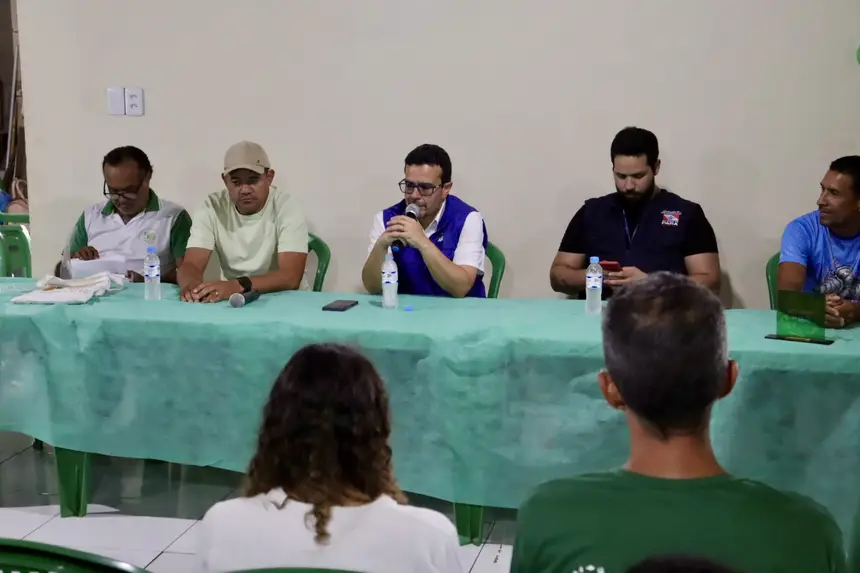
The deputy secretary also informed about the progress of other territorial planning actions in the region, stating that “together with the Inter-American Development Bank (IDB), we continue the financing for the Environmental and Participatory Territorial Diagnosis of the Coastal Economic Ecological Zoning of Sector 4 of the Pará Coastal Zone.” The Coastal Economic Ecological Zoning (ZEEC), provided for in Law 9.064 of 2020, aims to ensure the planning of the use and occupation of the Coastal Zone, optimizing the application of environmental management instruments in an integrated, decentralized, and participatory manner.
Text: Vinícius Silva/ Ascom Semas


